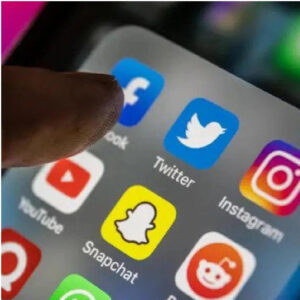8:00AM - 5:00PM
Monday to Friday


There are many laws of nature and one of them is that your greatest source of advantage is your greatest source of danger. This is true of social media; the greatest benefit of social media is its speed and ability to reach far and beyond within a very short time.

Brian B. Mukalazi Chief Executive officer, Talis Consults Ltd
Many businesses that have embraced social media have created a competitive edge over those that have not taken full advantage of social media. However, social media is a double—edged sword, it can promote and grow your business rapidly, but it can also ruin your business within a matter of minutes!
About a month or so ago, one of my old clients, in a health institution, I will call XY hospital (not real name), faced the wrath of social media. This was after one of their former employees, a medical officer, Dr. P (not real name), took to Twitter to express his grievances with the hospital.
In a lengthy Twitter thread, Dr. P spoke of his despair at the hands of his former employer. In part, the tweets read: “July/1st/22, I was recruited to work as a medical doctor at XY Hospital on a full—time contract, running 16 duties a month paying a sum of Shs2.3m monthly, this money was only paid (July & August 2022) after having initially been part—time from May 2022 [sic]”. He added, “Dry spell hit when there was no money being paid…from September to December 2022 even with constant engagements with both the clinic head & the CEO

He further tweeted that, in January 2023, having failed to recover his money from his employer, which had accumulated to Shs9.2m, he engaged a lawyer. The lawyer wrote a demand letter to the hospital with intention to sue if the employer did not pay the money in a specified period. Upon receipt of the letter, the Chief Executive Officer apparently panicked and requested for negotiations, which Dr. P was not willing to engage in. Eventually the hospital sent Dr. P Shs4m.
The tweets went on and on; in which he indicated that he decided to share because he saw so many doctors in private facilities being taken for a ride and not being paid, and that it was a shame that his fellow doctors were so much behind his predicament.
As you can imagine, the tweets went viral in just a couple of minutes, attracting attention from different Ugandans, including common folks, medical practitioners, Members of Parliament, activists, and government officials.
After what seemed like a long silence, the hospital issued a statement, and it was obvious that they were in a crisis mode. The statement was far from convincing, as it was short of humility and was devoid of clear acknowledgment of fault or error on their part. Inevitably, it generated more flurry from the angry public.
Dr. P could have been wrong, but at that moment, it didn’t matter. The damage was done! Risk incidents like this are on the rise today in the face of increased social media use. Social media is now considered by many as a more effective communication platform than the rest, and this presents completely new challenges for organizations and leaders.
While social media comes with multiple benefits, it can also be used as an instrument of blackmail, revenge, and spite. I have seen how easy it is for relationships (corporate or personal) to slip from a healthy status to disaster and some organizations have paid the ultimate price.
It is, therefore, important for leaders to be both purposeful and intentional with social media. There is need to strengthen public relations function, including development of solid, and executable crisis management plans to minimize damages that could be caused by social media.

To demonstrate this need further, here’s another social media incident and how it was managed.
On April 12, 2018, at a Starbucks Café in Philadelphia, USA, two African American men were waiting to meet a friend. When they asked to use the restroom, they were stopped because, apparently, they had not purchased anything. The manager subsequently asked them to leave.
When they refused, the police were called, and the two men were handcuffed, arrested, and removed from Starbucks. This incident was caught on video and went viral within minutes of being posted, sparking national outrage at what was seen as an ugly case of racial profiling and discrimination.
Just like in the case of XY Hospital highlighted above, Starbucks was besieged with anger and criticism.
Kevin Johnson, Starbucks’ CEO at the time, suddenly found himself and his company thrust into a national controversy. But unlike the hospital CEO, Johnson took full responsibility. Here are several excerpts from his official statement made several days after the incident:
“I want to begin by offering a personal apology to the two gentlemen who were arrested in our store. What happened in the way that incident escalated, and the outcome, was nothing but reprehensible, and I’m sorry. I want to apologize to the community in Philadelphia, and to all my Starbucks partners. This is not who we are, and it’s not who we’re going to be. We are going to learn from this, and we will be better for it. These two gentlemen did not deserve what happened, and we are accountable. I am accounta
There were many ways Starbucks could have responded. The CEO could have blamed the Café employees, fired them, and simply stated that they weren’t representatives of the spirit and culture of Starbucks. Or he could have blamed the Police for acting irrationally, but he chose to take full responsibility.
Kevin Johnson did more than just make a statement, he flew to Philadelphia and met personally with the two men to apologize to them and to make amends. Furthermore, he also knew that dealing with the root causes of this issue would require more than an apology.
So, first, Starbucks changed and clarified the relevant policy, and this was issued in a letter to all employees. In addition, he made an unprecedented commitment to conduct racial—bias training for all of Starbucks’ 175,000 U.S employees.
No one knows what could have befallen Starbucks had the CEO acted otherwise. But one thing is known for sure, his meticulous, quick actions saved the day.
The sad truth is that organizations, no matter the size, will at different points make mistakes, which can all be candidates for potential social media criticism. It is, therefore, important that organizations develop social media management strategies.
Among other things, the social media management strategy should have guidelines on dealing with negative social media. I find the following tips from Forbes magazine (forbes.com, December 18, 2020), very useful:
Always take responsibility, even if you disagree with the author of the review. Take the negative feedback and respond respectively. Your strategy should be to take the conversation away from the public to the private domain; so, encourage the concerned party to call you or email you.
Regardless of how negative the comments are or who has posted them, your response must be delivered in a respectful manner. Remember that any form of disrespect will generate more negative comments.
Even when you know you are right, acknowledge comments. Be honest and explain the cause of the problem and how you are addressing it.
Comments on social media, regardless of how negative or outlandish they are, must be taken seriously. Responses must be carefully crafted to convey a sense of understanding as to why the comments were made.
A speedy response shows the poster as well as others reading the comment that you care. It also allows you to shape the conversation before others potentially chime in and turn one post into a thread of negativity.
When responding to criticism on social media, it’s important to ensure that the customer feels legitimately heard. Acknowledge their frustrations, own up to the feedback they’ve shared, and encourage them to direct the message to you to make things right.
Conclusion
Here’s my parting question to business leaders and other leaders: How prepared are you for the outcomes in case a social media disaster strikes?
This article was first published in the NSSF Risk Echo Magazine – Issue 7 released in August 2023

The most important characteristics of blue ocean strategy is a new way of solving users’ pains, which means creating the solution no one expected to exist, but that everyone needed. This is called value innovation. “The best way to beat the competition is to stop trying to beat the competition” - Chan Kim and Renée Mauborgne
Read More
OCHAYA MUZAMIRU
September 18, 2023Thank you Talis , the truth is social media has become one of uncontrolled sharp sword not only to organisation but even to our government , relationships and families 👪. You have pointed out very good opinion on how to handle the crisis , personally I get my answer to preparedness on last week's discussion we had "Open Communication in our workplaces"This can not only prepare the company but also a preventive measure : If the employees and their seniors always meet to air out their views on how to develop our organizations and also have a platform to air out their mind , challenges and how our organizations have build us , I think Mr.XP wouldn't have really gone on social media .The other issue that we as leaders need to look at is to create a sense of belonging amongst those we lead.I have come to understand that most employees have a feeling that I am just here for the salary,"KAWOGO"as they call it , they lack spirit of ownership and usually this is the category that will not care about the image of the firm , so they will post anything and hide under freedom of speech......